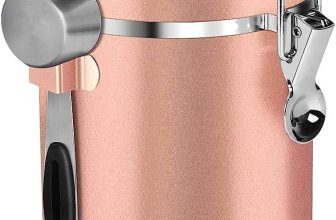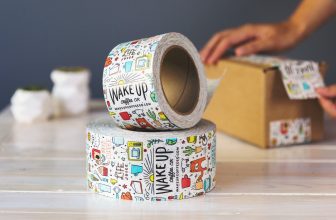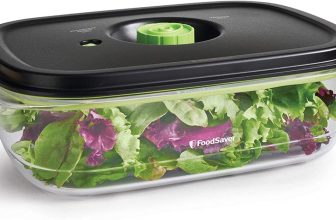To store vacuum-sealed foods, place them in a cool, dry, and dark place to prevent spoilage and maintain freshness. Vacuum-sealed foods should be stored away from direct sunlight or heat sources.
:max_bytes(150000):strip_icc()/zwilling-f1214b25e00145f48f207f89d868d5be.jpg)
Credit: www.foodandwine.com
Benefits Of Vacuum Sealing Foods
Vacuum sealing foods offers numerous benefits, including extending shelf life and preserving their nutritional value. By removing oxygen from the packaging, vacuum-sealed foods are protected from spoilage and the growth of harmful bacteria. This process ensures that fruits, vegetables, and meats stay fresh for longer periods, saving you money and reducing food waste.
Vacuum sealing also helps to maintain the nutritional content of the food, as exposure to oxygen can lead to nutrient degradation. Whether you’re looking to store leftovers or plan for future meals, vacuum sealing is a great way to ensure that your food stays fresh and nutrient-rich.
So, why not incorporate this simple yet effective technique into your food storage routine?
Preparing Foods For Vacuum Sealing
Properly cleaning and pat drying your foods before vacuum sealing is crucial for optimal storage. This helps to remove any dirt, bacteria, or other contaminants that may be present. Additionally, pat drying the foods ensures that excess moisture is removed, preventing freezer burn and maintaining the quality of the food.
Another key aspect is portion sizes – it’s important to cut the foods into appropriate sizes before vacuum sealing. This not only helps with saving space in the freezer but also allows for easier thawing and serving later on. By following these guidelines, you can ensure that your vacuum sealed foods remain fresh and delicious for longer periods of time.
So, before you dive into vacuum sealing, take the time to properly clean, pat dry, and portion your foods for the best results.
Essential Tools For Safe Food Storage
Storing vacuum sealed foods requires essential tools for safe food storage. A high-quality vacuum sealer is necessary to ensure proper sealing. Vacuum sealing bags or containers can be used to store different types of foods. Labels and a sharpie marker are essential for proper organization and identifying the stored foods.
It is important to label the bags or containers with the contents and date to keep track of freshness. These tools not only help in maintaining food quality and freshness but also prevent any cross-contamination. By using a vacuum sealer and the appropriate storage tools, you can prolong the shelf life of your foods and reduce waste.
Properly stored vacuum sealed foods maintain their flavor, texture, and nutritional value for a longer period. So, invest in these essential tools and enjoy the benefits of safe and extended food storage.
Choosing The Right Foods To Vacuum Seal
Choosing the right foods to vacuum seal is crucial for effective storage. Dry goods and pantry staples like rice, pasta, and flour can be stored in vacuum-sealed bags to maintain freshness and prolong shelf life. When it comes to fresh meats and poultry, vacuum sealing helps to lock in flavor and prevent freezer burn.
It’s important to properly wrap the meat before vacuum sealing to avoid punctures. For fruits and vegetables, consider blanching them before vacuum sealing to preserve texture and color. In addition to preserving food, vacuum sealing can also help save space in your freezer or pantry.
By removing excess air, vacuum-sealed bags take up less space, allowing you to maximize storage capacity. Vacuum sealing is a great way to extend the shelf life of your favorite foods and minimize food waste.
How To Vacuum Seal Foods Correctly
Vacuum sealing foods correctly is essential to maintain their freshness and extend their shelf life. To begin the bagging and sealing process, make sure to choose appropriate vacuum seal bags or containers. These should be specifically designed for vacuum sealing.
Next, carefully place the food inside the bag, leaving enough room for the sealing process. Now, it’s time to remove air properly from the bag. Use the vacuum sealer to suck out all the air, creating a tight seal. Finally, ensuring a secure seal is crucial.
Double-check that the bag is properly closed and sealed to prevent any air or moisture from entering. By following these steps, you can effectively store vacuum-sealed foods and keep them fresh for longer periods.
Safe Storage Practices For Vacuum Sealed Foods
Safe storage practices for vacuum-sealed foods are crucial to maintain their freshness and quality. When it comes to refrigeration guidelines, ensure that vacuum-sealed foods are stored below 40°f to prevent bacterial growth. Freezing techniques are also an excellent option, as they extend the shelf life of vacuum-sealed foods.
Remember to label and date each package for easy identification. For shelf-stable storage, choose a cool and dark place away from direct sunlight and heat sources. It’s important to rotate the vacuum-sealed foods, using the oldest ones first to prevent any spoilage.
By following these guidelines, you can enjoy the benefits of vacuum-sealed foods for an extended period. So, make sure to implement these storage practices for maximum freshness and taste.
Reaping The Rewards: Tips For Maximum Freshness
Storing vacuum sealed foods properly is essential for maintaining maximum freshness. To ensure your food stays fresh, follow these tips. First, practice proper thawing techniques, allowing the food to thaw completely before use. Controlling temperature and humidity is also important.
Store vacuum sealed foods in a cool, dry area away from direct sunlight. Regular inspection is necessary to check for any signs of spoilage or deterioration. Make sure to rotate your vacuum sealed foods regularly, using the first in, first out (fifo) method.
This ensures that older items are used before newer ones. By following these guidelines, you can enjoy the rewards of vacuum sealing your foods and preserve their freshness for longer periods.
Warning Signs: When To Discard Vacuum Sealed Foods
Warning signs of spoilage should not be taken lightly when it comes to vacuum sealed foods. Pay attention to peculiar smells or off-putting odors. Additionally, if you notice any unusual color changes or sliminess, it’s best to discard the food.
Expiration dates are crucial indicators of freshness, so be sure to check them before consuming. Moreover, safe practices for perishable foods include storing them at the proper temperature, ensuring they remain below 40°f. In this way, you can prevent the growth of harmful bacteria and maintain food quality.
Remember, it’s essential to be cautious and discard any vacuum sealed foods that show signs of spoilage to keep yourself and your loved ones safe.
Frequently Asked Questions For Vacuum Sealed Food Storage
Vacuum sealing is an efficient method to store food for extended periods. But can you vacuum seal liquids? Yes, you can vacuum seal liquids by using specially designed vacuum sealer machines. Wondering how long vacuum-sealed food lasts? Vacuum-sealed food can last up to 3-5 times longer than traditional storage methods.
It preserves the freshness, flavor, and nutritional value of your food. Can you reuse vacuum sealing bags? It depends on the type of bag you’re using. Some vacuum sealing bags can be washed and reused, while others are designed for one-time use.
Consider investing in reusable, bpa-free bags to reduce waste and save money in the long run. Properly storing vacuum-sealed foods can help you enjoy fresh and flavorful meals whenever you want. So, make the most of this efficient storage method and prolong the shelf life of your favorite foods.
Frequently Asked Questions For How To Store Vacuum Sealed Foods
How Long Can Vacuum Sealed Food Last?
Vacuum sealed food can last 2 to 3 times longer than food stored in traditional methods. On average, most vacuum sealed foods can last up to 2 to 3 years in the freezer and 1 to 2 weeks in the refrigerator.
Can You Vacuum Seal Hot Foods?
It is not recommended to vacuum seal hot or warm foods as it can create an environment for bacteria to grow. It is best to let hot foods cool down completely before vacuum sealing them.
Can You Store Liquids In Vacuum Sealed Bags?
Yes, liquids can be stored in vacuum sealed bags. To prevent spills, it is important to use bags specifically designed for liquids and to leave enough headspace for the liquid to expand when freezing.
Can You Vacuum Seal Deli Meats?
Yes, vacuum sealing deli meats can help prolong their shelf life. Be sure to place the deli meats in a separate sealed bag or wrap them in plastic wrap before vacuum sealing to prevent any juices from getting into the machine.
Can You Freeze Vacuum Sealed Foods?
Absolutely! Vacuum sealing is a popular method for freezing foods. It helps to prevent freezer burn and maintain the quality of the food for a longer period of time. Just make sure to label and date your vacuum sealed foods for easy identification in the freezer.
Conclusion
In a world where convenience and food preservation are paramount, vacuum sealing emerges as a game-changer. With a few simple steps, you can prolong the shelf life of your favorite foods and maintain their freshness. Start by choosing the right vacuum sealing system that suits your needs, and ensure your food is prepared correctly before sealing.
Store vacuum-sealed foods in cool and dark environments, avoiding exposure to direct sunlight and extreme temperatures. Consider organizing your freezer and pantry for better accessibility and hassle-free meal planning. Finally, don’t forget to label and date your vacuum-sealed items to avoid confusion.
By following these tips, you will not only save money by reducing food waste but also have the convenience of ready-to-eat meals at your fingertips. So why wait? Embrace vacuum sealing and revolutionize the way you store your food.




